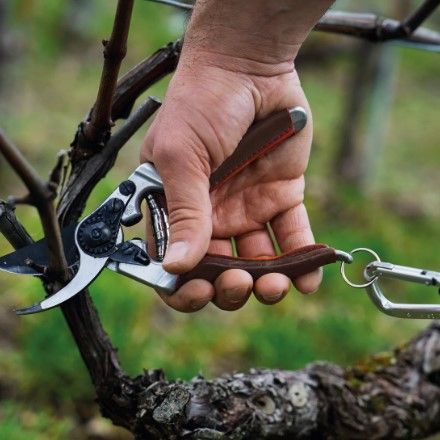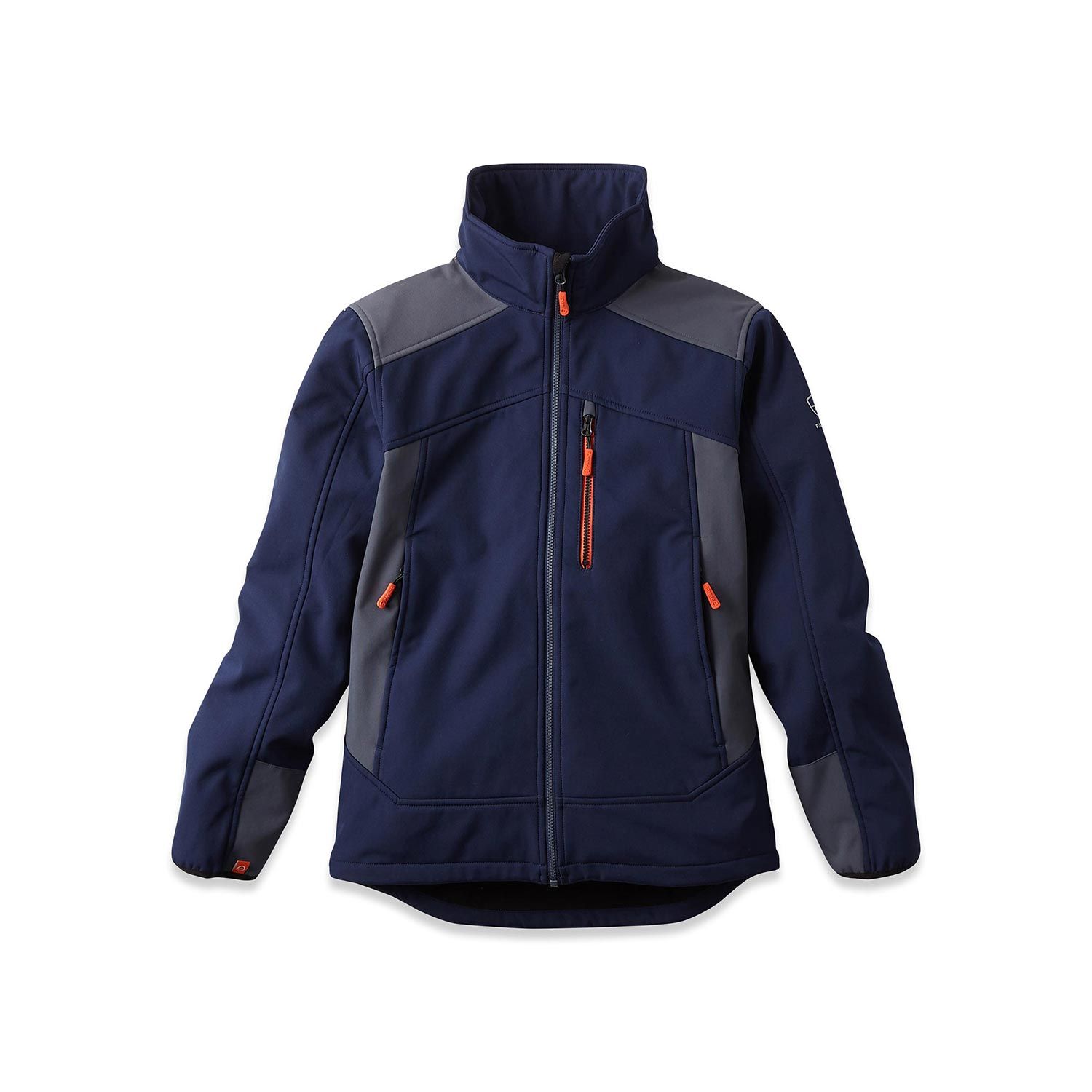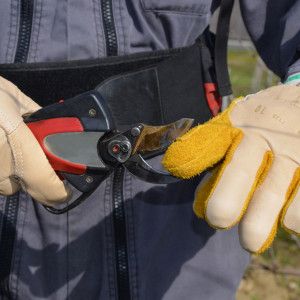Pruning the vine is essential to ensure good grape production, while maintaining the plant's health.
Pruning must be adapted to the vine's life cycle, which can be divided into 5 main stages: winter rest, spring awakening, flowering and fruit set, veraison and harvest.
The cycle begins again each year, influenced by the climate and the work of the winemaker.
1. When to prune the vine?
Vines are pruned mainly in winter, during the dormant period between leaf fall and the start of bud burst. This generally takes place between the end of November and March, depending on the climate in your region. It's best to prune during a period when it's not freezing, as this allows the vine to heal properly and minimizes the risk of disease. This period is ideal because it limits the injuries caused by cutting. What's more, the smell of "cut wood" attracts fewer insect pests.
Vines can also be pruned in summer, a process known as "green pruning". This is done to control the growth of shoots and to aerate the vine. It is not a main pruning operation, but rather a cleaning or corrective pruning.
2. Training pruning and fruiting pruning
Pruning can be carried out using several methods, but the two most common are training pruning (for young vines) and fruiting pruning (for mature vines).
Formation pruning (for young vines):
Formation pruning is the pruning of young vines to define their structure and future development. This pruning guides the vine's growth and orients its shoots so that it can produce optimal grapes when it is more mature.
1. First winter: Cut the main stem (known as the "stake") to a height of around 40-50 cm to encourage the vine to branch out.
2. Second winter: Select two vigorous branches (called "sprigs" or "canes") and cut off the ends of any branches that are not well formed. Keep these canes so that they can produce bunches.
3. Subsequent years: Continue to select the best canes to develop a strong trunk and a good network of branches. This allows the vine to develop the right structure.
Fruiting pruning (for mature vines):
Fruiting pruning is pruning carried out on mature vines, mainly to encourage the production of quality grapes by regulating the number of shoots and buds that will bear fruit. Unlike training pruning, which shapes the structure of the vine at the beginning of its life, fruiting pruning concentrates on optimizing the harvest each year.
1. Selecting branches from the previous year: Each year, the "thumbs" or "spurs" (short shoots from the previous year) that have produced grapes should be retained. These will bear new bunches of grapes.
2. Shortening branches: The aim is to cut these branches to a length of around 2 to 3 eyes (the buds) to encourage the growth of new shoots that will bear bunches of grapes.
3. Balancing canes: On each main branch, it is important to balance the number of "spurs" to avoid producing too many or too few grapes.
4. Different pruning techniques for vines
Depending on the type of vine and the region you live in, there are different pruning techniques.
Short pruning includes goblet pruning, commonly used for Mediterranean grape varieties such as Grenache and Carignan. In this method, the shoots are pruned short and without support. Another form of short pruning is Cordon de Royat pruning, adapted to vigorous grape varieties such as Cabernet Sauvignon and Syrah. It consists in keeping a horizontal arm with short spurs.
Long pruning includes Guyot pruning, which can be single or double, and is commonly used in Burgundy and Bordeaux for grape varieties such as Pinot Noir and Merlot. It is based on the retention of a long shoot, called a baguette, accompanied by a few spurs. Another method, fan pruning, practiced in Alsace and Champagne, allows the stump to be aerated thanks to several support arms.
There are also mixed prunings, such as the Poussard pruning, inspired by the Guyot pruning but designed to preserve the longevity of the stock by balancing the distribution of wood. Sylvoz pruning, frequently used in Italy and certain French regions for very vigorous grape varieties such as Prosecco, is based on drooping canes.
Finally, some prunings are specific to climates and crop types. Pergola pruning, typical of Italy, particularly Tuscany and Sicily, is particularly suited to hot, humid climates. Lyre pruning, used in oceanic climates, notably in the Loire and South-West regions, optimizes sunlight for the grapes.
Each pruning method is chosen according to the needs of the grape variety, climate and production objectives, whether to improve grape quality, control yield or facilitate mechanization of the vineyard.
5. E-Viti advice

When cutting, it's important to make clean, precise cuts at a slight angle to avoid water stagnation, which could encourage disease. Care must also be taken to avoid leaving snags (small pieces of dead wood), as they can be entry points for fungi. The orientation of the cut should encourage the vine's natural healing process.
As vine pruning is a repetitive activity that can be tiring for hands and arms, it is advisable to wear protective gloves that are strong to avoid cuts and splinters. You'll also need safety glasses can be useful for protection against splinters. If pruning is carried out in cold or wet winter weather, appropriate clothingsuch as a wind- and waterproof jacket, are recommended to keep out the cold and damp. Finally, to prevent musculoskeletal disorders, we recommend adopting an ergonomic posture and taking regular breaks.





